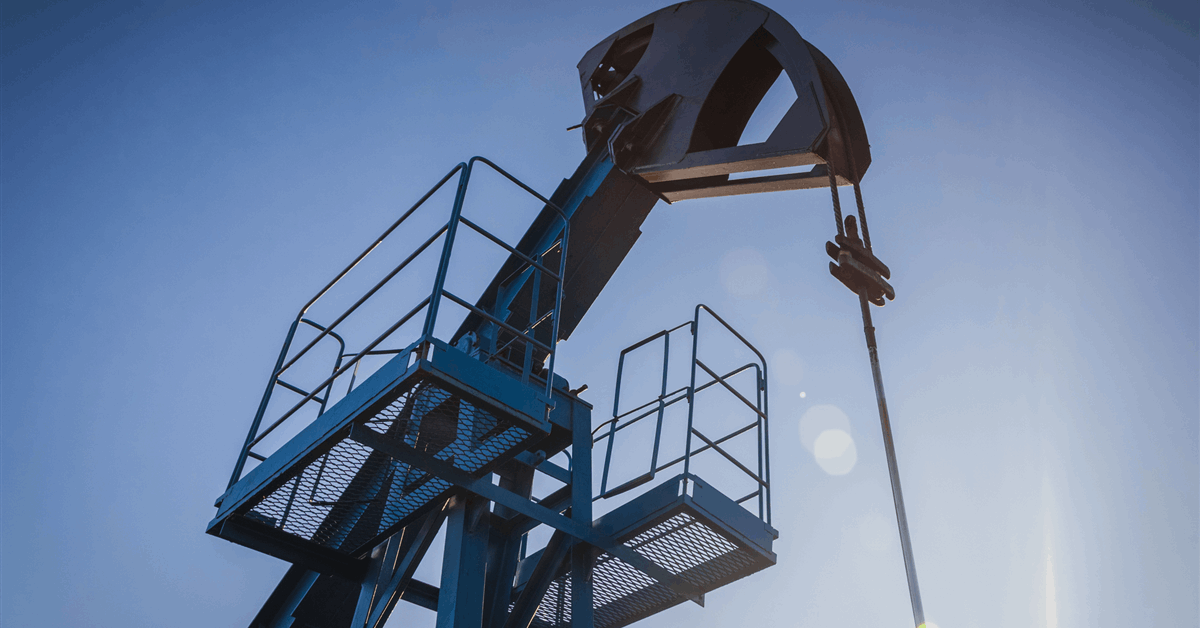Wells CM-1 and CM-2 in the Copper Moki field in New Zealand’s Taranaki Basin are now producing a combined 125 barrels of oil per day on average, about a month following workovers, Monumental Energy Corp. said Tuesday.
“These rates continue to trend upward as pump speeds are gradually increased to optimize flow while preventing sand from entering the borehole”, the Vancouver, Canada-based company said in a statement online.
“The pumps will continue to be turned up to its set daily production rate of 175 but will be tested higher to see what the wells can produce at capacity”, Maximilian Sali, Monumental vice president for corporate development and director, added.
Copper Moki, which started up 2011, halted production 2022, according to data from New Zealand’s Ministry of Business, Innovation and Employment (MBIE). Last year Monumental agreed to fund workovers at CM-1 and CM-2, owned by New Zealand Energy Corp. (NZEC), in exchange for an initial entitlement of 75 percent of revenue.
Monumental previously said the wells had been shut in due to mechanical issues rather than reservoir-related concerns and that recompletions only required standard maintenance and equipment upgrades.
Monumental announced the restart of production at CM-2 in June, while CM-1 resumed production late July.
“In addition to oil production, both wells are now exporting associated gas to the neighboring Waihapa Production Station for processing and sale”, Monumental said Tuesday.
“Oil is stored on site and trucked to port every two days, with the next shipment scheduled for September 20, 2025”.
Under the agreement with NZEC, Monumental is entitled to 75 percent of revenue, net of production costs, until its investment is recovered, after which it will have a 25 percent net revenue royalty in the permit. NZEC itself is partly owned by Monumental.
“The company [Monumental] is actively advancing evaluations on potential additional oil and gas projects in the area”, Tuesday’s statement said.
Beyond Taranaki, New Zealand’s only hydrocarbon-producing region, Resources Minister Shane Jones confirmed July 31 that companies will be able to apply for new exploration permits as early as September, after lawmakers revoked an Ardern-era ban.
“The [Crown Minerals Amendment] Bill removes the ban on oil and gas exploration beyond onshore Taranaki, better aligns decommissioning settings with international practice, establishes a new tier of permit to undertake small-scale non-commercial gold mining and signals the Coalition Government’s intent to reinvigorate investment in Crown-owned minerals”, Jone said in a statement.
“The ill-fated exploration ban in 2018 has exacerbated shortages in our domestic gas supply by obliterating new investment in the exploration and development needed to meet our future gas needs. Reserves are also falling faster than anticipated”, Jones said.
In other projects, Waihapa-Ngaere resumed oil and gas production last March starting with four wells. NZEC owns a 50 percent stake in the project.
“Following a successful recommissioning of the Ngaere-1 pipeline in July, production from that well re-commenced mid July 2025 with flush rates of more than 400 barrels of oil produced in one day”, NZEC said in a press release August 14. “As a result, the field production rates are temporarily limited to the rate at which the Waihapa Production Station can hold oil in tanks onsite for stabilization and then truck oil to the port. Over the last two weeks, the trucking has averaged ~190 barrels per day (NZEC share ~95 bpd).
“The focus for Waihapa Ngaere for the next month is to remove system bottlenecks so that the increased oil rate can be produced continuously and transported to port via the oil pipeline”.
Meanwhile, in the Tariki Gas Storage Project, NZEC said June 30 structural remapping was being conducted to support the project’s subsurface modeling. The modeling, expected to be completed August, serves to confirm the range of storage capacities, associated cushion gas requirements, operating pressures and rates, and long-term storage behavior.
“In addition, the company has carried out dynamic reservoir and well performance modeling of the area in the vicinity of the Tariki-5A well to evaluate restoring the well to production”, NZEC added. “The modelling confirms that gas-lift for a period of up to three weeks is likely to be sufficient to re-establish gas production from the up-dip gas volumes. As a result, the company plans to commence well and facility engine”.
Concept studies for the facility itself are also scheduled to be delivered August, NZEC said.
“There has never been a better time to embark on a gas storage business in New Zealand due to the alignment of declining domestic gas production, rising price volatility, the urgent need for energy security, supportive government policy and the clear lack of existing large-scale storage infrastructure”, said NZEC chief executive Michael Adams.
To contact the author, email jov.onsat@rigzone.com
element
var scriptTag = document.createElement(‘script’);
scriptTag.src = url;
scriptTag.async = true;
scriptTag.onload = implementationCode;
scriptTag.onreadystatechange = implementationCode;
location.appendChild(scriptTag);
};
var div = document.getElementById(‘rigzonelogo’);
div.innerHTML += ‘‘ +
‘‘ +
‘‘;
var initJobSearch = function () {
//console.log(“call back”);
}
var addMetaPixel = function () {
if (-1 > -1 || -1 > -1) {
/*Meta Pixel Code*/
!function(f,b,e,v,n,t,s)
{if(f.fbq)return;n=f.fbq=function(){n.callMethod?
n.callMethod.apply(n,arguments):n.queue.push(arguments)};
if(!f._fbq)f._fbq=n;n.push=n;n.loaded=!0;n.version=’2.0′;
n.queue=[];t=b.createElement(e);t.async=!0;
t.src=v;s=b.getElementsByTagName(e)[0];
s.parentNode.insertBefore(t,s)}(window, document,’script’,
‘https://connect.facebook.net/en_US/fbevents.js’);
fbq(‘init’, ‘1517407191885185’);
fbq(‘track’, ‘PageView’);
/*End Meta Pixel Code*/
} else if (0 > -1 && 95 > -1)
{
/*Meta Pixel Code*/
!function(f,b,e,v,n,t,s)
{if(f.fbq)return;n=f.fbq=function(){n.callMethod?
n.callMethod.apply(n,arguments):n.queue.push(arguments)};
if(!f._fbq)f._fbq=n;n.push=n;n.loaded=!0;n.version=’2.0′;
n.queue=[];t=b.createElement(e);t.async=!0;
t.src=v;s=b.getElementsByTagName(e)[0];
s.parentNode.insertBefore(t,s)}(window, document,’script’,
‘https://connect.facebook.net/en_US/fbevents.js’);
fbq(‘init’, ‘1517407191885185’);
fbq(‘track’, ‘PageView’);
/*End Meta Pixel Code*/
}
}
// function gtmFunctionForLayout()
// {
//loadJS(“https://www.googletagmanager.com/gtag/js?id=G-K6ZDLWV6VX”, initJobSearch, document.body);
//}
// window.onload = (e => {
// setTimeout(
// function () {
// document.addEventListener(“DOMContentLoaded”, function () {
// // Select all anchor elements with class ‘ui-tabs-anchor’
// const anchors = document.querySelectorAll(‘a .ui-tabs-anchor’);
// // Loop through each anchor and remove the role attribute if it is set to “presentation”
// anchors.forEach(anchor => {
// if (anchor.getAttribute(‘role’) === ‘presentation’) {
// anchor.removeAttribute(‘role’);
// }
// });
// });
// }
// , 200);
//});
